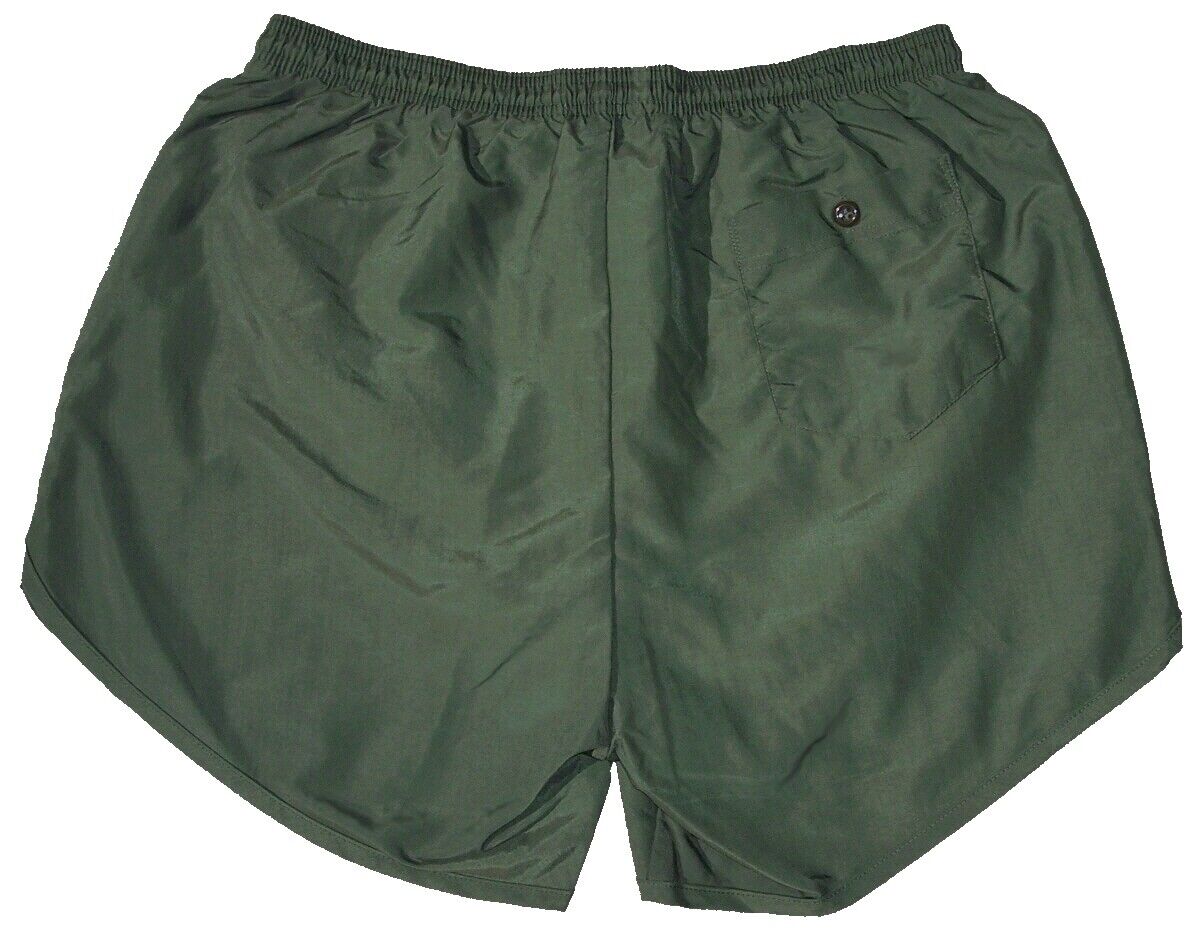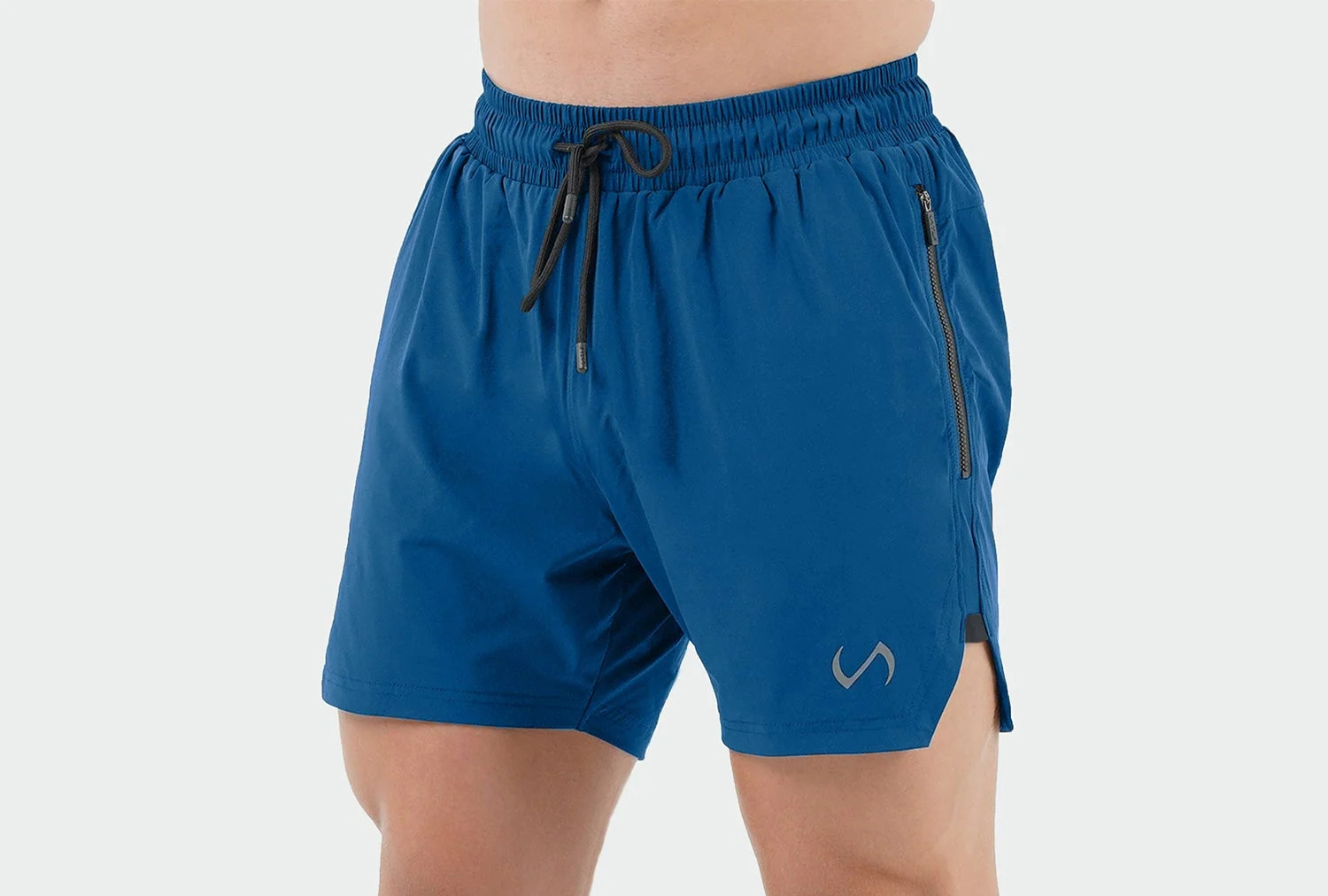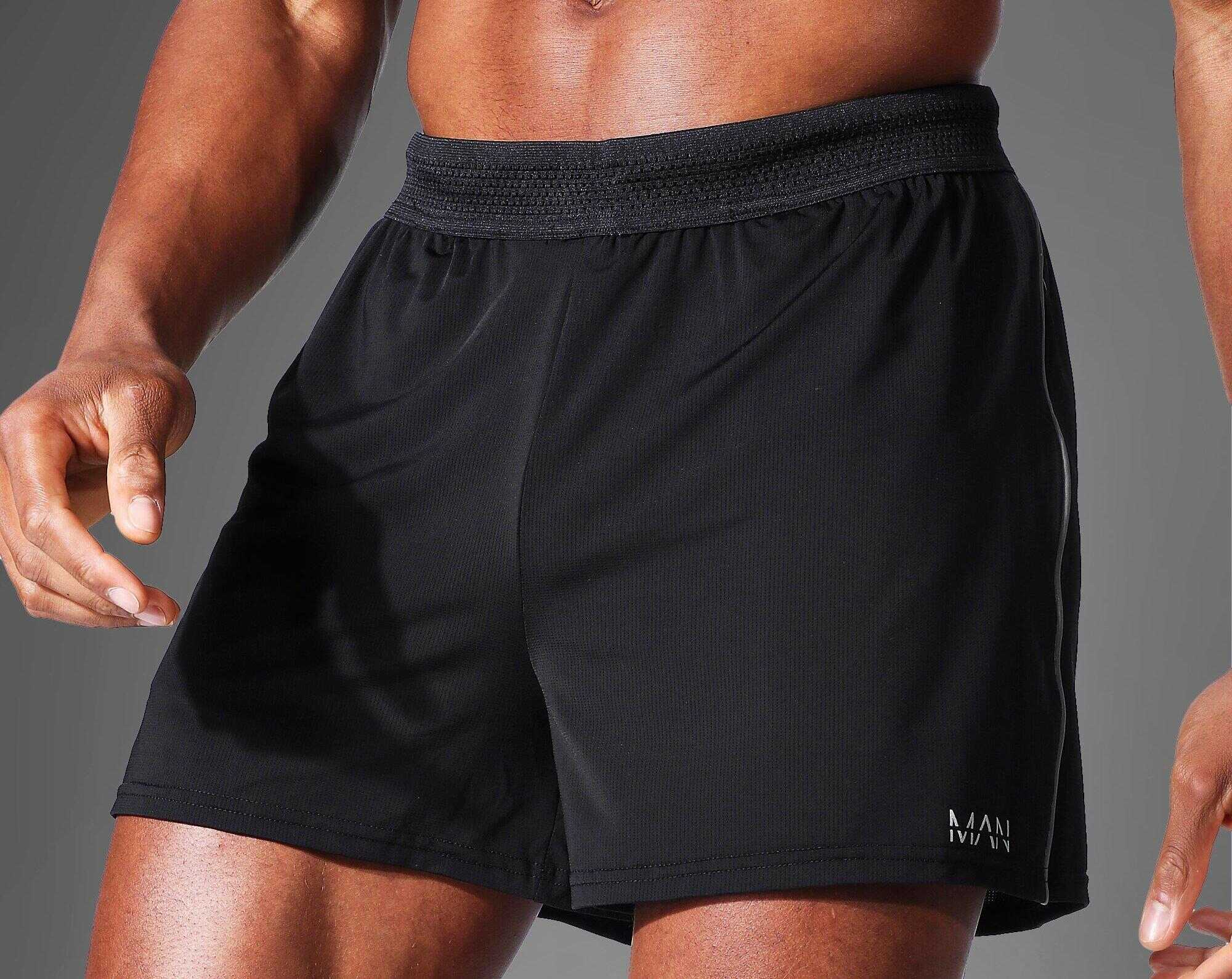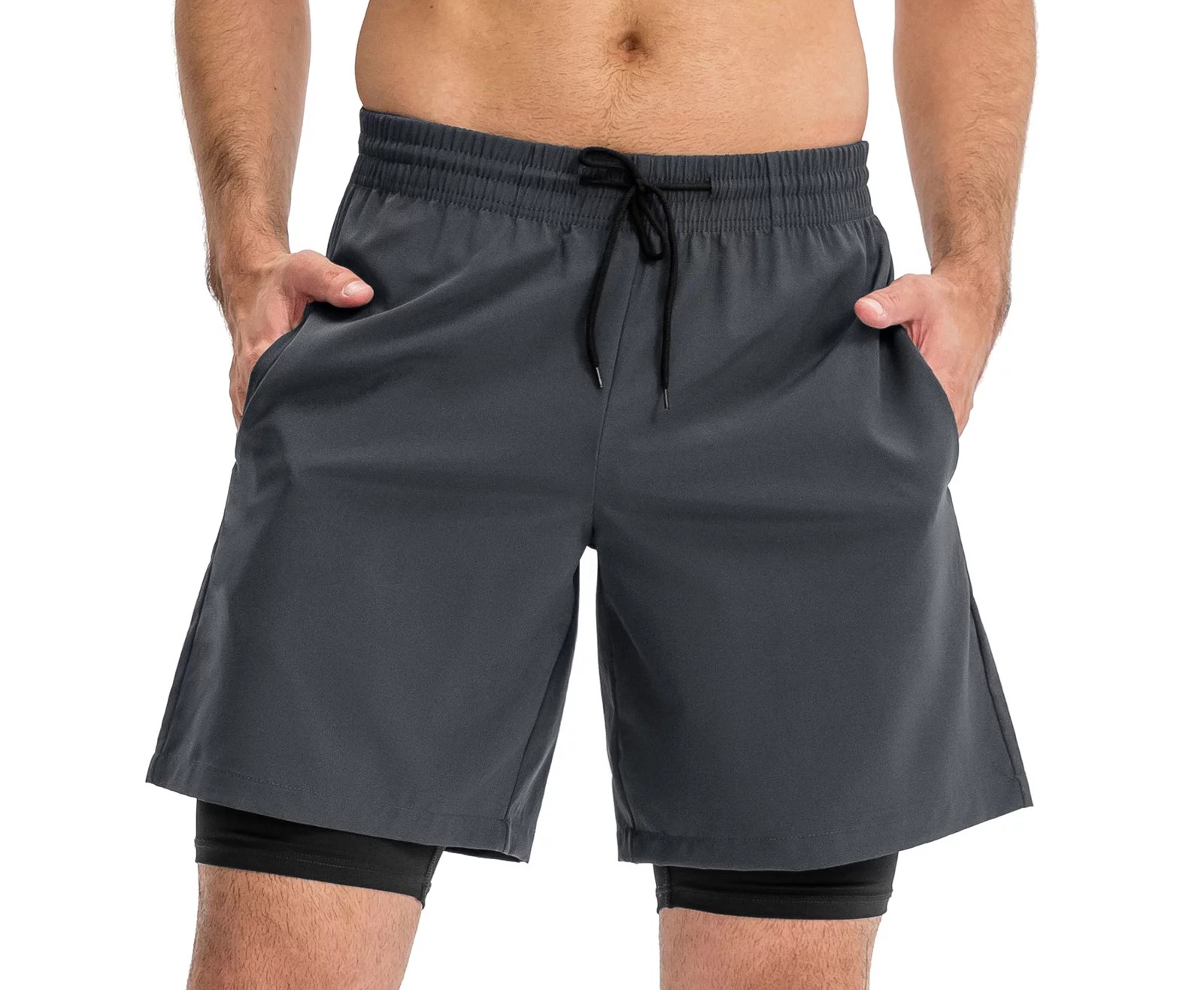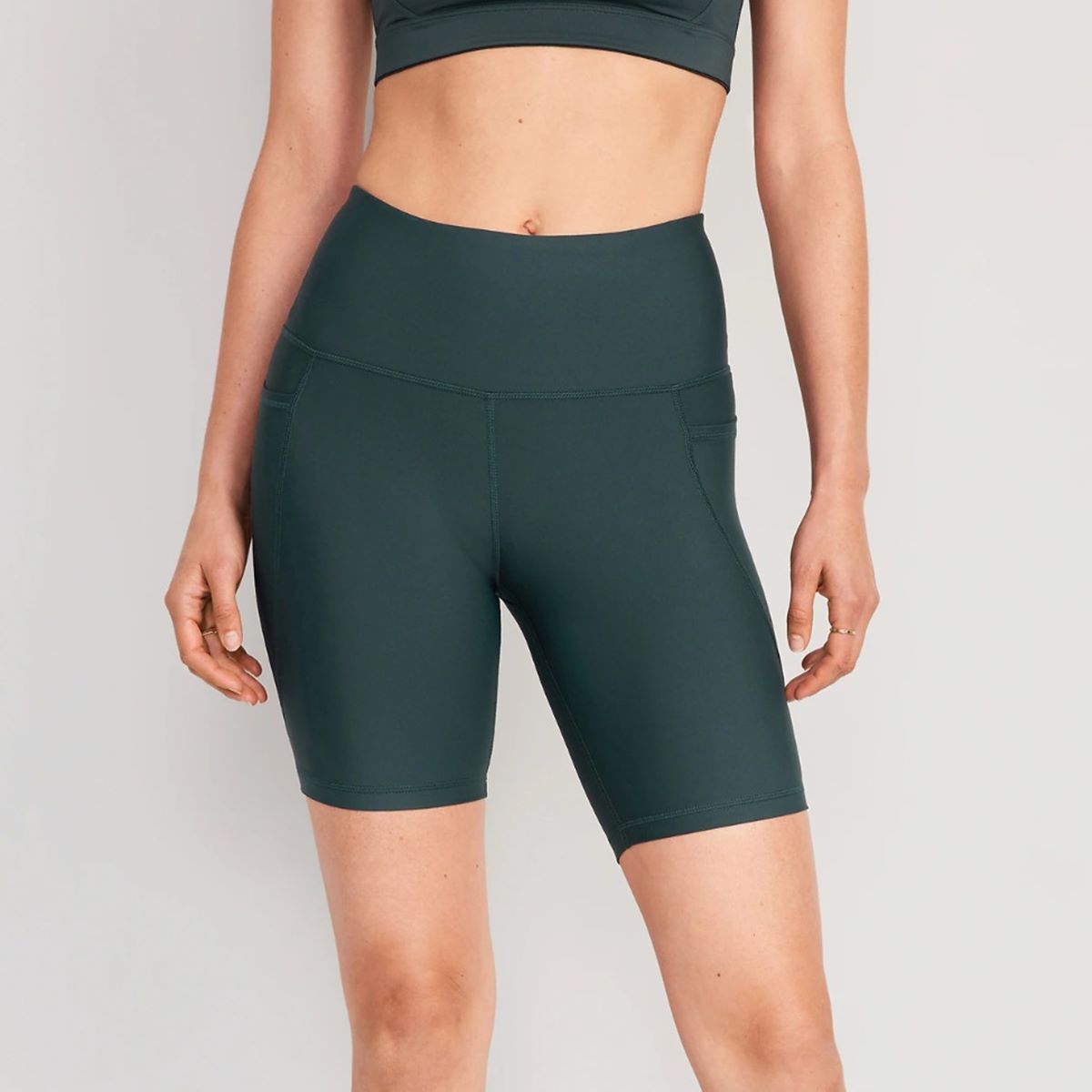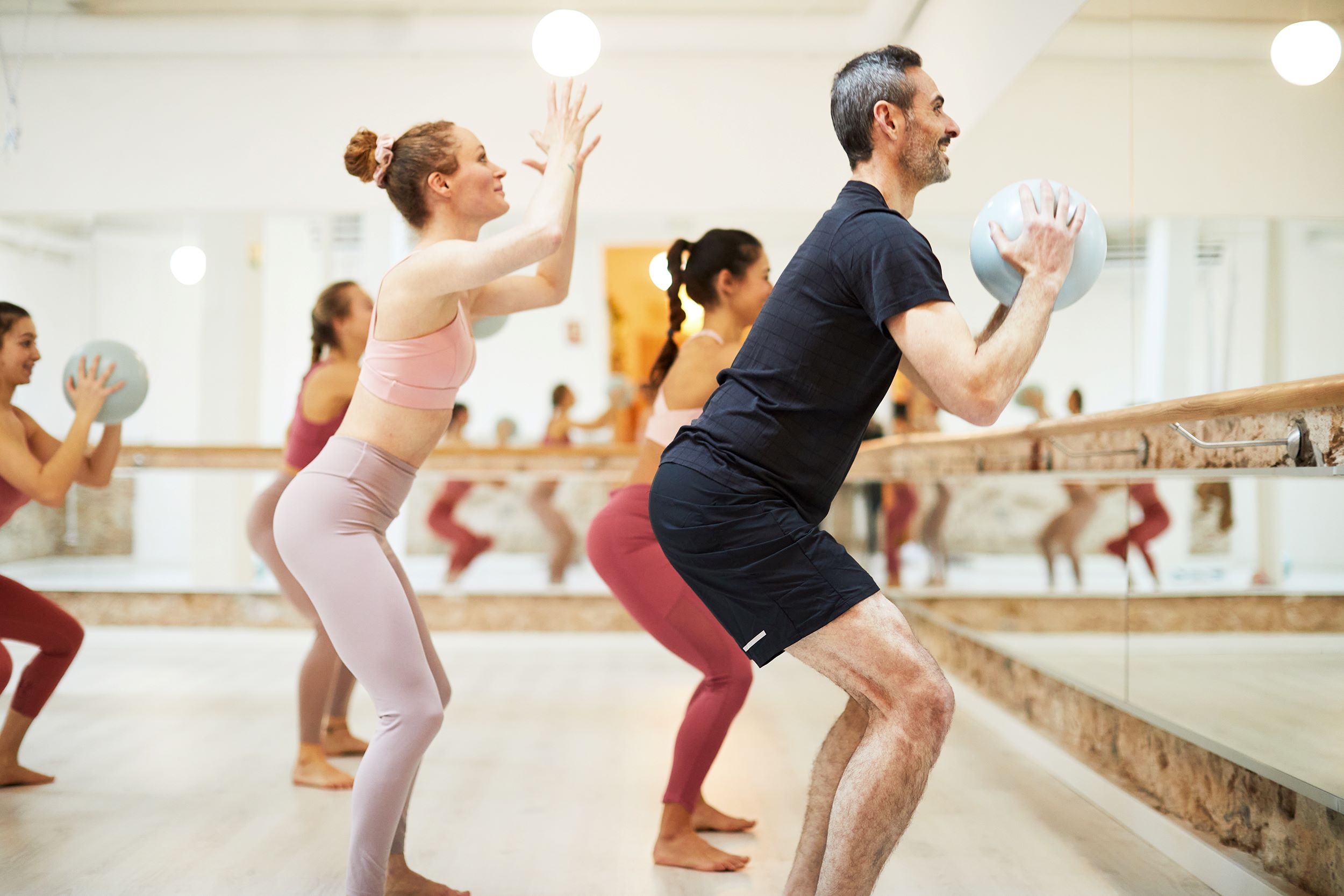

Featured
What Is A Barre Workout
Modified: August 19, 2023
Discover the benefits of a barre workout, a popular fitness routine that combines ballet-inspired movements with strength training. Get featured in the world of barre workouts!
Introduction
Welcome to the world of barre workouts! If you’re looking for a fun and effective way to strengthen your muscles, improve flexibility, and tone your body, then you’re in the right place. Barre workouts have gained immense popularity in recent years, and for good reason – they offer a unique combination of ballet-inspired moves, strength training, and cardio elements that deliver incredible results.
But what exactly is a barre workout? Derived from ballet exercises, barre workouts are low-impact fitness routines that focus on small, isometric movements and high repetitions. These movements target specific muscle groups, helping to sculpt and elongate your muscles, improve posture, and increase overall body strength. The exercises are performed using a ballet barre for support, although there are variations that can be done without one.
One of the wonderful aspects of barre workouts is that they are accessible to people of all fitness levels. Whether you’re a seasoned athlete or a beginner who has never stepped into a ballet studio, you can benefit from this type of exercise. The movements are gentle on the joints, making it suitable for those with injuries or joint issues. Plus, the choreographed sequences and upbeat music make it a fun and engaging workout that doesn’t feel like a chore.
In this article, we’ll explore the various aspects of barre workouts, including the benefits they offer, the basic moves you can expect to perform, and the equipment needed. We’ll also discuss the differences between attending physical barre classes and following instructional videos at home. If you’re new to barre workouts, we’ve got you covered – we’ll provide tips on getting started and highlight some precautions to ensure a safe and effective workout.
So, whether you’re looking to strengthen your core, improve your posture, or simply add some variety to your fitness routine, get ready to plié and pulse your way to a fitter, more toned you with the wonderful world of barre workouts.
What is a Barre Workout?
A barre workout is a unique form of exercise that combines elements of ballet, Pilates, and yoga. Originating from the ballet world, the barre workout has been adapted for people of all fitness levels and aims to strengthen and tone the muscles, improve flexibility, and enhance overall body awareness.
The primary feature of a barre workout is the use of a ballet barre for support, although other props such as resistance bands, hand weights, and exercise balls may also be incorporated. The exercises typically involve small, precise movements that target specific muscle groups, often using isometric contractions and high repetitions to fatigue the muscles.
One of the key principles of a barre workout is the focus on form and alignment. Proper alignment is emphasized throughout the exercises to ensure maximum effectiveness and prevent injury. In a typical class, you may find yourself performing a series of movements at the barre, in the center of the room, and on the mat.
Barre workouts are designed to engage and strengthen the entire body, with a particular emphasis on the core, thighs, glutes, and arms. While the routine may seem deceptively simple, the small range of motion and the intensity of the movements work to create a deep burn in the muscles, leading to improved strength and endurance over time.
One of the defining features of a barre workout is its low-impact nature. Unlike high-intensity exercises such as running or jumping, barre workouts place minimal stress on the joints, making it a great option for individuals with joint issues or those who prefer a gentler form of exercise.
Additionally, barre workouts are known for their mind-body connection. By focusing on precise movements and engaging the muscles mindfully, practitioners can develop improved body awareness, better posture, and a greater sense of balance and coordination.
Overall, an effective barre workout can help you achieve a well-toned physique, improved flexibility, and enhanced core strength. It offers a versatile and customizable approach to fitness that can be adapted to individual needs and goals.
Now that we have an understanding of what a barre workout is, let’s explore some of the incredible benefits that come with incorporating this form of exercise into your fitness routine.
Benefits of Barre Workouts
Barre workouts offer a multitude of benefits that make them a popular choice among fitness enthusiasts. From sculpting lean muscles to improving posture and flexibility, here are some of the key advantages of incorporating barre workouts into your fitness routine:
- Strengthens and Tones Muscles: Barre workouts target multiple muscle groups simultaneously, including the core, glutes, thighs, and arms. The small, precise movements and high repetitions create a burn in the muscles, leading to increased strength and definition over time.
- Improves Posture: The focus on alignment and proper form in barre workouts helps improve posture by strengthening the muscles that support the spine and promoting a neutral position. This can lead to reduced back pain and improved overall body alignment.
- Increases Flexibility: Barre exercises incorporate elements of stretching and lengthening, helping to improve flexibility and range of motion. Regular practice can lead to increased joint mobility and an enhanced ability to perform daily activities with ease.
- Enhances Core Strength: The core muscles are engaged throughout the entire duration of a barre workout, resulting in improved core stability and strength. A strong core is not only essential for a toned midsection but also for better balance and overall body strength.
- Burns Calories and Boosts Metabolism: While barre workouts may not be the most intense form of exercise, they still provide an effective calorie-burning workout. The combination of cardio elements, strength training, and muscle endurance work can help increase your metabolic rate and aid in weight loss.
- Increases Body Awareness: Barre workouts require a high level of concentration and mind-body connection. By focusing on proper form and engaging the muscles mindfully, practitioners develop improved body awareness, coordination, and balance, both during the workout and in everyday life.
- Accessible for All Fitness Levels: Barre workouts can be modified to suit individuals of all fitness levels and abilities. Whether you’re a beginner or an experienced athlete, the exercises can be adjusted to accommodate your needs and gradually increase in intensity as you progress.
- Low-Impact Workout Option: Unlike high-impact exercises such as running or jumping, barre workouts place minimal stress on the joints. This makes them ideal for individuals with joint issues, rehabilitation needs, or anyone who prefers a low-impact form of exercise.
With all the incredible benefits that barre workouts offer, it’s no wonder that more and more people are incorporating this enjoyable and effective fitness routine into their lives. Now that we’ve explored the advantages, let’s dive into the basic barre moves that you can expect to perform during a typical barre workout.
Basic Barre Moves
Barre workouts incorporate a wide range of movements that are designed to target specific muscle groups and provide a full-body workout. While each class may vary, here are some basic barre moves you can expect to encounter:
- Pliés: This classic ballet move involves bending your knees while keeping your heels on the ground. It targets the thighs and glutes and helps improve lower body strength and balance.
- Relevés: Relevés are performed by rising onto the balls of your feet while maintaining proper alignment. This move works the calves, ankles, and core, helping to improve balance and calf strength.
- Leg Lifts: Leg lifts involve raising one leg to the side or to the back while maintaining stability in the supporting leg. This move targets the outer thighs, glutes, and hip muscles, enhancing overall lower body strength and stability.
- Arabesques: Arabesques involve extending one leg behind you while maintaining balance on the supporting leg. This move targets the glutes, hamstrings, and core, helping to improve lower body strength and flexibility.
- Plank Variations: Barre workouts often incorporate various plank exercises to target the core muscles. These may include forearm planks, side planks, or plank leg lifts, which work the abs, back, and shoulder muscles for a strong and stable core.
- Arm Sculpting: Barre workouts also focus on strengthening and toning the arms. Moves such as bicep curls, tricep dips, and push-ups are often incorporated to target the muscles of the upper body.
- Back Dancing: Back dancing exercises involve engaging the back muscles while performing movements such as arm circles, shoulder rolls, and spine stretches. These exercises help improve posture and strengthen the muscles supporting the spine.
- Stretching: In addition to the strength-building moves, barre workouts also include stretches to improve flexibility and prevent muscle tightness. These stretches typically target the major muscle groups in the body, including the legs, back, and shoulders.
These are just a few examples of the basic barre moves you might encounter during a class. The precise sequence and combination of exercises may vary depending on the instructor and the style of the workout. By incorporating these movements into your fitness routine, you can experience the numerous benefits that barre workouts have to offer.
Now that we have an understanding of some basic barre moves, let’s discuss the equipment typically used in barre workouts.
Barre Equipment
One of the great advantages of barre workouts is that they can be done with minimal equipment. While a ballet barre is the traditional support used in barre classes, there are alternatives available for those who don’t have access to a studio or prefer to work out at home. Here are the typical types of barre equipment:
- Ballet Barre: The ballet barre is a long, horizontal bar that is attached to the wall or freestanding. It provides stability and support during the exercises, allowing for more controlled movements and better balance. In a traditional barre class, participants will use the barre extensively throughout the workout.
- Portable Barre: Portable barres are freestanding, adjustable bars that can be easily assembled and disassembled. They are a great option for those who prefer to work out at home or need a portable barre that can be taken to different locations. Portable barres often come in different heights to accommodate different users.
- Chair or Countertop: If you don’t have access to a ballet barre or portable barre, you can use the back of a sturdy chair or a kitchen countertop as a substitute. Make sure that the surface is stable and at an appropriate height to support your body weight during the exercises.
- Pilates Ball: Also known as a stability ball or a Swiss ball, a Pilates ball is a versatile piece of equipment that can be used to add variety and challenge to your barre workouts. It can be placed between the thighs or used for core exercises to engage the muscles in a different way.
- Resistance Bands: Resistance bands are stretchy bands that provide resistance to your movements, adding an extra challenge to your barre workout. They can be used to target specific muscle groups and increase the intensity of the exercises.
- Hand Weights: Hand weights, also referred to as dumbbells, are used to add strength training to your barre routine. They come in various weights to accommodate different fitness levels and can be used for exercises such as bicep curls, tricep extensions, and shoulder presses.
- Yoga Mat: While not essential for a barre workout, a yoga mat can provide extra cushioning and support during floor exercises and stretching. It helps to create a comfortable surface and can prevent slipping or discomfort while performing the routine.
It’s important to note that while these pieces of equipment can enhance your barre workouts, they are not essential. Many barre exercises can be modified or performed without any additional equipment, using your body weight for resistance. Whether you choose to incorporate equipment or not, the key is to focus on proper form, technique, and engaging the targeted muscles.
Now that we’ve covered the equipment typically used in barre workouts, let’s discuss the difference between attending physical barre classes and following instructional videos at home.
Barre Classes vs. Barre Videos
When it comes to practicing barre workouts, you have the option of attending physical barre classes or following instructional videos at home. Both options offer unique benefits and considerations. Let’s take a closer look at the differences between barre classes and barre videos:
Barre Classes:
Attending a physical barre class allows you to experience the energy and motivation that comes from working out in a group setting. Here are some advantages of taking barre classes:
- Expert Instruction: In a barre class, you will have a qualified instructor who will guide you through the workout, offering modifications and corrections to ensure proper form and technique.
- Real-time Feedback: Instructors in physical classes can provide immediate feedback, correcting any misalignments or offering guidance for deeper engagement of the muscles during the exercises.
- Social Atmosphere: Barre classes provide an opportunity to meet like-minded individuals who are also passionate about fitness. It can be a supportive and motivating environment, where you can form friendships and find accountability.
- Variety and Progression: In a class setting, instructors often incorporate a variety of exercises and choreographed sequences to keep the workouts engaging and challenging. As you progress, the intensity and complexity of the movements can be gradually increased to match your fitness level.
- Access to Equipment: Physical barre studios are well-equipped with ballet barres, props, and sometimes even specialized equipment to enhance your workout experience and target specific muscle groups.
Barre Videos:
Barre workout videos offer the convenience and flexibility of practicing at home, anytime you choose. Here are some benefits of following instructional videos:
- Flexibility and Convenience: With barre videos, you can work out at your own pace and on your own schedule. This flexibility allows you to fit your workout into your busy lifestyle and gives you the freedom to choose the duration and intensity of each session.
- Cost-effective Option: Barre videos are often more affordable than attending physical classes, making them a great option for those on a budget.
- Wide Variety of Options: There is a vast selection of barre workout videos available online, ranging from beginner-friendly routines to advanced programs. This variety allows you to explore different instructors and styles to find the ones that resonate with you.
- Privacy and Comfort: Some individuals prefer the privacy and comfort of exercising at home, without the self-consciousness that can sometimes come with working out in a group setting.
- Accessible for All Fitness Levels: Barre videos often offer modifications and variations for different fitness levels, allowing you to choose the level of challenge that is appropriate for you.
Ultimately, whether you choose to attend physical barre classes or follow instructional videos at home depends on your personal preferences, schedule, budget, and fitness goals. Some individuals may prefer the social aspect and in-person guidance of a class, while others may find the convenience and flexibility of home videos more suitable. There is no right or wrong choice – it’s all about finding what works best for you and helps you stay consistent with your fitness routine.
Now that you have an understanding of the differences between barre classes and barre videos, let’s provide some tips for getting started with barre workouts.
Tips for Getting Started with Barre Workouts
If you’re new to barre workouts, getting started can feel a little overwhelming. But don’t worry! We’ve got you covered with some helpful tips to ensure a successful and enjoyable barre experience:
- Start Slow: Barre workouts may seem deceptively simple, but they can be quite challenging. Start with beginner-level classes or instructional videos to familiarize yourself with the basic movements and gradually increase the intensity as your strength and endurance improve.
- Listen to Your Body: It’s important to listen to your body and respect its limitations. If you experience pain or discomfort during an exercise, modify or take a break. Pushing through intense discomfort can result in injury, so prioritize safety and take it at your own pace.
- Focus on Form: Proper form is crucial in barre workouts. Pay attention to the alignment cues from the instructor or video and engage the correct muscles for each movement. Maintaining proper form not only maximizes the benefits of the exercise but also reduces the risk of injury.
- Engage Your Core: A strong core is the foundation of all barre movements. Concentrate on engaging your abdominal muscles throughout the workout to improve stability, balance, and overall body strength.
- Don’t Underestimate the Power of Stretching: While barre workouts are primarily focused on strength training, stretching is essential for increasing flexibility and preventing muscle tightness. Make sure to incorporate stretching at the beginning and end of your workout to warm up and cool down your muscles.
- Stay Hydrated: Barre workouts can be intense and sweat-inducing, so it’s important to stay hydrated throughout your session. Keep a water bottle nearby and take sips as needed to replenish fluids during breaks.
- Wear Appropriate Attire: Comfortable, form-fitting workout attire allows for a full range of motion and enables the instructor or video to assess your form. Choose clothing that doesn’t restrict your movements and wear supportive athletic shoes or grip socks if required by the class or video.
- Practice Consistency: Like any form of exercise, consistency is key to seeing results. Aim to incorporate barre workouts into your routine on a regular basis, whether it’s attending classes or following videos. Consistency will allow your body to adapt and progress over time.
- Enjoy the Journey: Remember to have fun and enjoy the process. Barre workouts can be challenging, but they are also a great opportunity to connect with your body, improve your fitness level, and challenge yourself in new ways. Embrace the journey and celebrate your progress along the way.
By following these tips, you’ll be well-prepared to embark on your barre workout journey with confidence and success. Remember that everyone’s fitness journey is unique, so be patient with yourself and celebrate your accomplishments, no matter how small they may seem. Now, let’s wrap up with some important precautions and safety tips to ensure a safe and effective barre workout.
Precautions and Safety Tips
While barre workouts are generally safe for most individuals, it’s important to keep some precautions and safety tips in mind to minimize the risk of injury and ensure a safe and effective workout:
- Consult with a Healthcare Professional: If you have any pre-existing health conditions or concerns, it’s always a good idea to consult with a healthcare professional before starting a new exercise routine, including barre workouts.
- Warm up Before Each Session: Always begin your barre workout with a thorough warm-up. Include dynamic stretches and movements to increase blood flow to your muscles and prepare your body for the exercises ahead.
- Listen to Your Body: Pay attention to any discomfort or pain during the exercises. If something doesn’t feel right, modify the movement or stop and consult with a professional if needed. Pushing through pain can lead to injury.
- Modify for Your Fitness Level: It’s important to listen to your body and modify the exercises to fit your current fitness level. If a move feels too challenging, choose a modification or take a break. Gradually progress as your strength and flexibility improve.
- Use Proper Alignment: Proper form and alignment are crucial in barre workouts. Focus on maintaining a neutral spine, engaging your core, and activating the correct muscles for each movement. Avoid excessive rounding or arching of your back.
- Stay Hydrated: Keep a water bottle nearby and take regular sips during breaks to stay hydrated. It’s important to replenish fluids lost through sweating during your workout.
- Use Suitable Equipment: If using props or equipment during your barre workout, make sure they are in good condition and appropriate for your skill level. Adjust resistance bands and weights according to your strength and comfort level.
- Rest and Recover: Allow your body time to rest and recover between barre workouts. Overtraining can lead to fatigue, muscle soreness, and increased risk of injury. Incorporate rest days into your schedule and listen to your body’s cues.
- Consider Professional Guidance: If you’re new to barre workouts or unsure about proper form, consider taking a few classes with a certified instructor. They can provide personalized guidance and ensure you’re performing the exercises correctly.
By following these precautions and safety tips, you can minimize the risk of injury and make the most out of your barre workouts. Remember, your safety and well-being should always be a top priority during exercise.
Now that you’re equipped with safety knowledge, let’s summarize the key points and emphasize the many benefits that barre workouts can offer.
Conclusion
Barre workouts offer a unique and effective way to strengthen and sculpt your muscles, improve flexibility, and enhance overall body awareness. Combining elements of ballet, Pilates, and yoga, barre exercises engage multiple muscle groups and provide a low-impact, high-intensity workout suitable for individuals of all fitness levels.
From the benefits of increased strength and toned muscles to improved posture and flexibility, barre workouts offer numerous advantages. By incorporating small, precise movements with high repetitions, participants can experience improved core strength, better balance, and increased body awareness.
Whether you choose to attend physical barre classes or follow instructional videos at home, both options have their unique benefits. Physical classes provide expert guidance, real-time feedback, and a motivating group atmosphere, while videos offer flexibility, convenience, and a wide variety of options to choose from.
As you embark on your barre journey, it’s important to start slow, focus on proper form, and listen to your body. Engage your core, incorporate stretching, and stay properly hydrated throughout your workouts. And always remember to consult with a healthcare professional if you have any pre-existing health conditions or concerns.
With consistency and dedication, barre workouts can help you achieve a toned physique, improved flexibility, and increased overall strength. Remember to have fun, celebrate your progress, and enjoy the journey as you plié, relevé, and pulse your way to a fitter, more confident you.
So, get ready to embrace the beauty and grace of barre workouts, and experience the amazing benefits they can offer both physically and mentally. Start today and reap the rewards of this incredible fitness routine!

